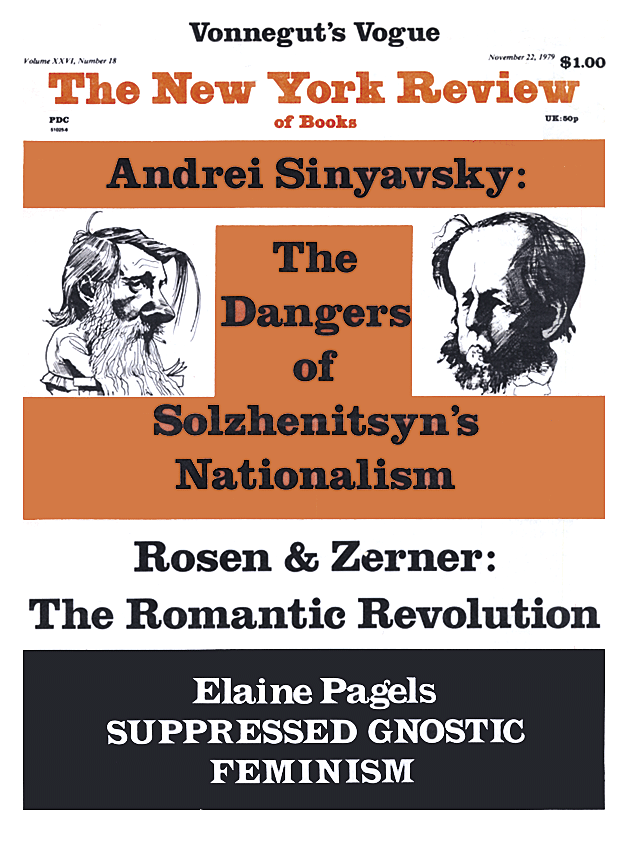In response to:
High Spirits from the September 27, 1979 issue
To the Editors:
A review of two books by Thomas Merton and one book about Thomas Merton (by George Woodcock), written by J.M. Cameron, appeared in the September 27 issue. In this review Professor Cameron states: “There is probably a Merton archive somewhere and I know that doctoral dissertations are being written about him.”
There is indeed a Merton archive, the Thomas Merton Studies Center of Bellarmine College in Louisville, Kentucky. In 1967, on the advice of friends and with the concurrence of his abbot, Merton decided to name Bellarmine College repository for his literary estate. After his death in Bangkok in 1968, his literary effects were transferred to Bellarmine College. No Merton papers remain at the Abbey of Gethsemani. Under the terms of the trust agreement signed in 1967, Bellarmine College owns and administers the corpus of the literary estate; three lay trustees control publication rights (the administrator for the trustees is Mrs. Anne H. McCormick, 670 West End Avenue, New York, NY 10025); and the Abbey of Gethsemani receives the income and acts in an advisory capacity (the liaison for Merton affairs at the Abbey is Br. Patrick Hart, OCSO).
Doctoral dissertations are being written about Merton. Sixty-two theses on Merton are on file at the Thomas Merton Studies Center. Twenty-four of these are doctoral dissertations. His influence is not confined to the United States. His works have been translated into twenty-three languages and theses have been submitted to institutions in the United States, Canada, Australia, Scotland, France, Spain, Italy, Poland, and Japan.
Professor Cameron also suggests that Merton’s writings were suppressed in the 1960s and that he was “reduced” to circulating his writings in “duplicated typescript.” This misconception continues to gain credence, even among Merton admirers. Merton, in fact, published more in the 1960s than he had before in his career. The bibliography by Marquita Breit bears this out. He did circulate his essays in “duplicated typescript,” but this was done primarily to get them to his friends and to other religious houses in an efficient and economical way. Nearly all the essays which exist in mimeograph form were published and, in most cases, the Thomas Merton Studies Center has on file the typescript draft, the duplicated typescript, and the published version for these essays.
Robert E. Daggy
Curator, Thomas Merton Studies Center
Bellarmine College
Louisville, Kentucky
J.M Cameron replies:
Those interested in Merton’s work will be glad to know about the archive at Bellarmine College.
As to the “suppression” of his work in the 1960s, this is a misconception, if it is one, shared by George Woodcock as well as myself (see p. 19 of Thomas Merton: Monk and Poet). I remember perfectly well receiving duplicated material, critical of the war in Vietnam, by Merton, and I was informed by the friends who sent it—and they were people in a very good position to know—that this material was circulated in this form because its open publication was objected to by the Gethsemani authorities. I don’t doubt that much of this was published when the atmosphere was more relaxed and criticism of the war more common.
This Issue
November 22, 1979


